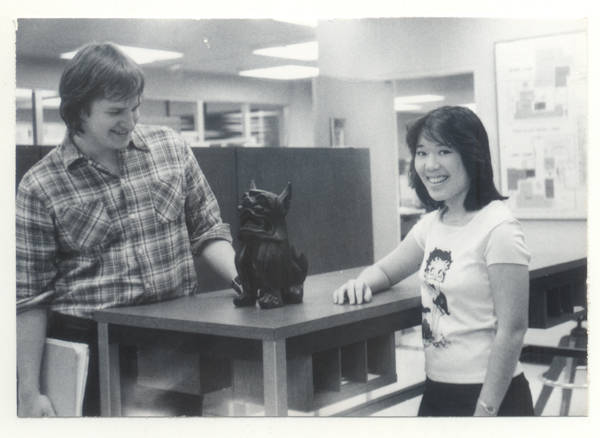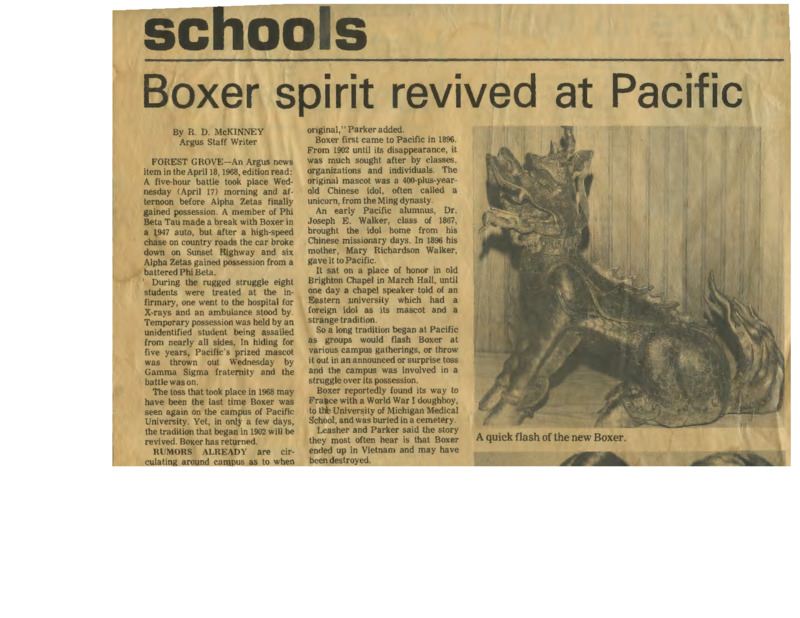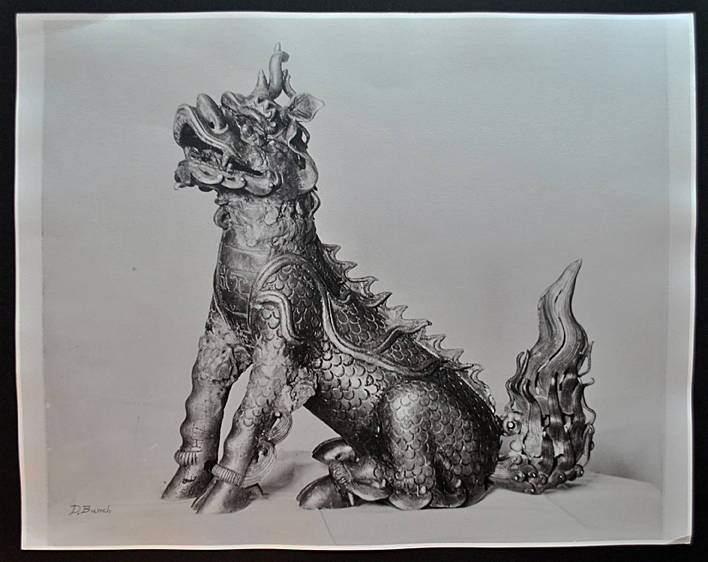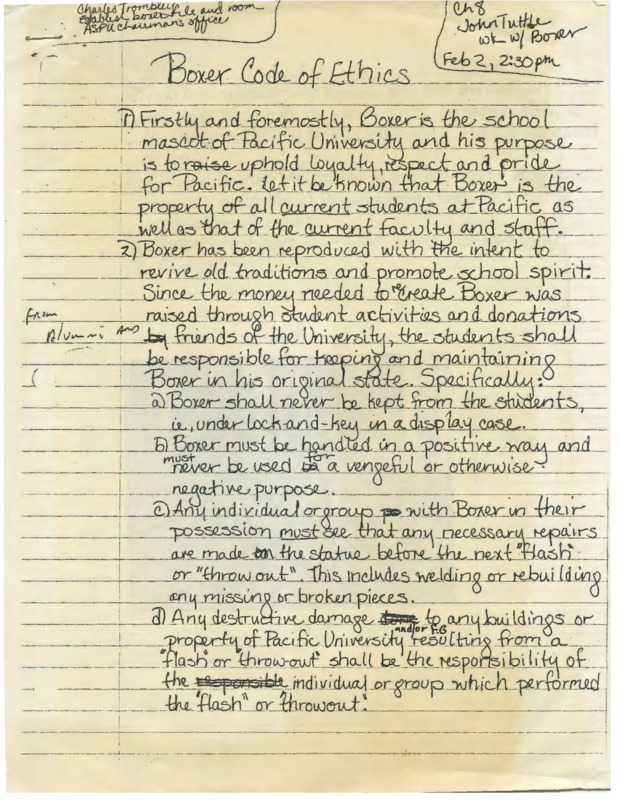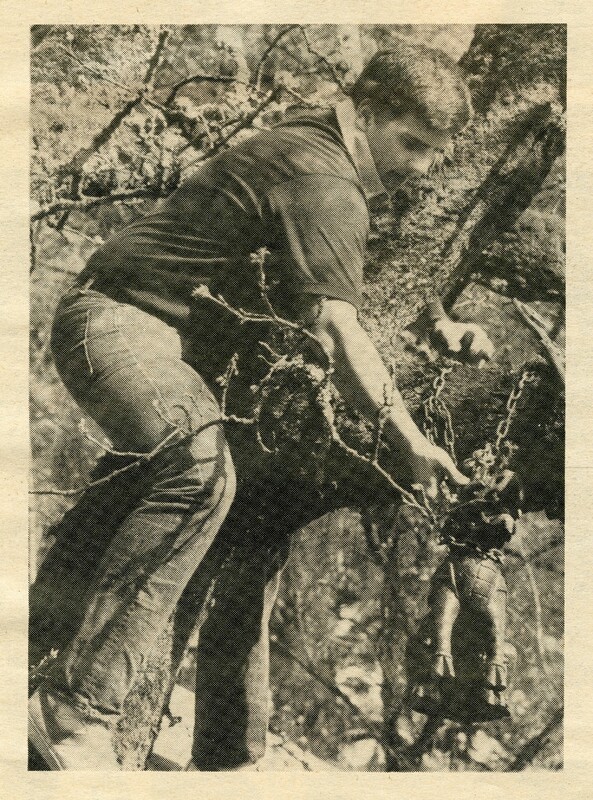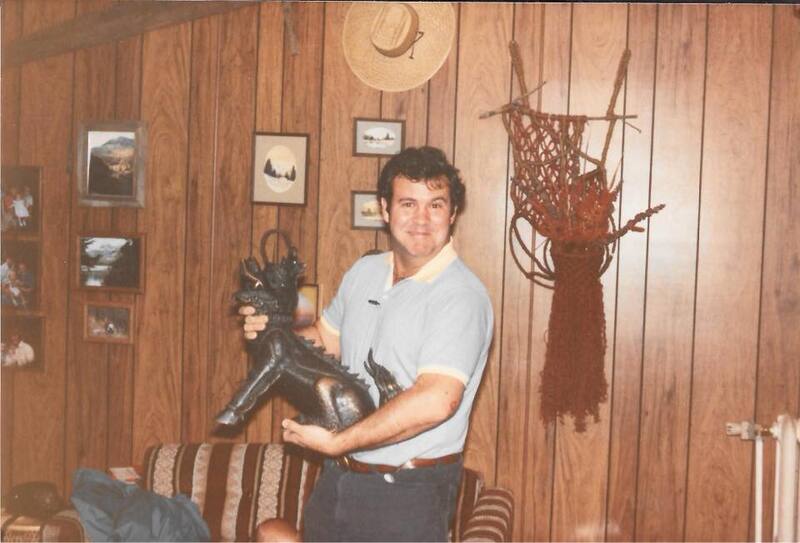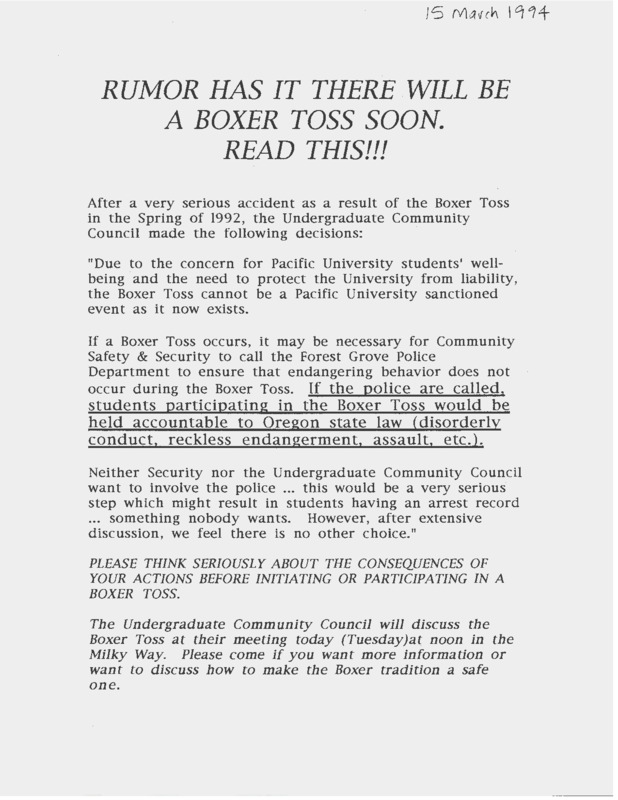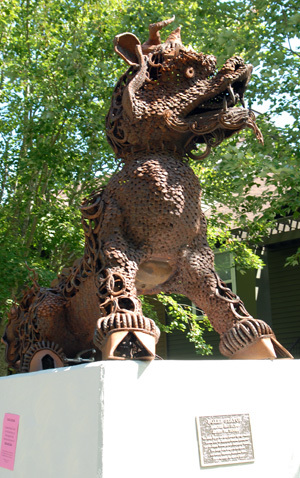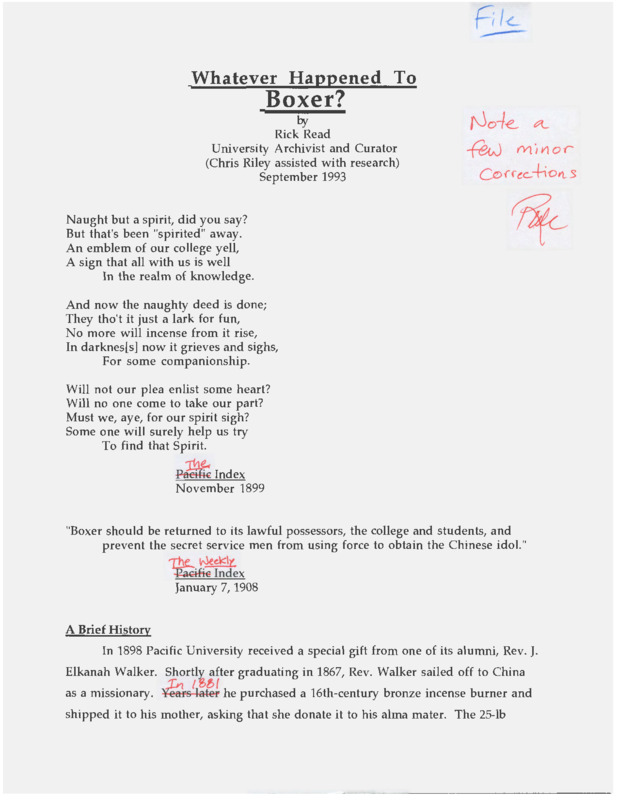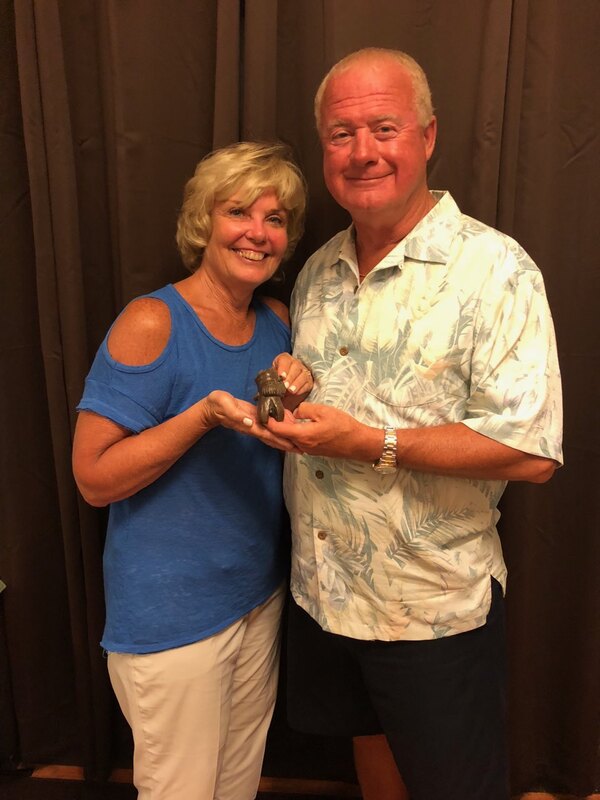1980s-2000s: The Boxer II Years
After more than a decade of calls for the missing original Boxer statue to be returned to campus, by 1980 students had begun to give up hope that it would ever be seen again. They used stand-ins, like a wooden statue that looked a bit like the original Boxer, as temporary placeholders to keep the traditions alive.
Around 1982, a small group of students -- Janet Leasher, Linda Parker and Kim Smith -- decided to raise funds for a replacement. The three women had to locate a sculptor willing to make a bronze replica on the very limited budget of $1,000 and with only one or two black-and-white photographs as reference images. They found a willing sculptor in Pat Costello, an art student at the University of Oregon. He did his best to recreate the original's size and shape, casting a replica that turned out to be bigger and heavier than the original, with somewhat different features. However, it was still recognizably Boxer, and the students of Pacific adopted it as a new symbol of school spirit.
This statue would become known as "Boxer II."
But the world had changed since the original Boxer had last been seen in 1969. While violent brawls for possession of Boxer had once been a beloved part of campus culture, by the '80s, lawsuits were on everyone's mind. Pacific University did not want to see students being injured or property destroyed during a Boxer Toss. The students who had raised money to make Boxer II also did not want to see it get damaged, or for it to go missing like the original. In an attempt to stave off these problems, the three fundraisers wrote a "Boxer Code of Ethics," which outlined responsibilities and boundaries for the new statue.
Perhaps not too surprisingly, these rules did not stick for long.
Pacific students soon restarted the tradition "tossing" Boxer out on campus. Boxer was lowered from a hot air balloon onto the football field; flashed through a crowd of students during the annual "Sign, Shake and Ring" ceremony in Old College Hall; and brawled over in the center of campus. Not everyone was a fan of this revival. Students and faculty alike became more alarmed about the potential for serious accidents to occur, leading to periodic announcements banning some of the most dangerous aspects of the Boxer Toss.
In 2008, Boxer II -- like the original Boxer -- disappeared from public view. While an alternate cast of Boxer II has since then been donated to the university, as of 2025 the location of the original cast of Boxer II is still unknown.
While Boxer II was circulating, the original Boxer was not forgotten.
University administrators had not held Boxer for more than a few hours at a time since 1899. Ever since then, it had been in the hands of students. Perhaps because of this, the university's administration appears to have viewed the fate of the statue as being a matter for students and alumni. The administration's interests in Boxer began to evolve in the 1980s and 1990s, however. Boxer became not only the university's mascot, but also the central symbol of its brand. In 2008, a stylized version of Boxer's head was adopted as the brand symbol of the university. Other artistic representations of Boxer were installed around campus as well, making it a recognizable part of the culture on campus.
Faculty, staff and students all began to think more seriously about what exactly Boxer was, and what Boxer represented. Was it a dog? A dragon? Why was it called Boxer? How did it come to Pacific? Could it serve as a symbol of cross-cultural exchange?
Pacific's first full-time professional museum curator, Rick Read, led an effort to answer questions like these. Through the work of his department, more reliable facts about Boxer's origins began to emerge in the 1990s. His compilation of historic photos and documents formed the basis of the archival collections featured on this site.
Pacific also began to concentrate more seriously on trying to find the original Boxer. Calls went out to the public and to alumni, asking for tips about its location. While Boxer's body remained hidden, fragments that had broken off began to be returned. The first piece was one of Boxer's feet, which was given back to Pacific in 2008. This fed the hope that Boxer might one day come home.
